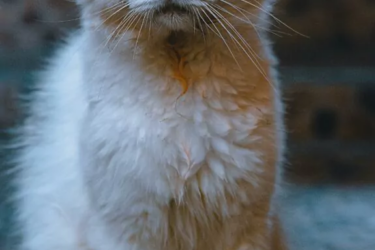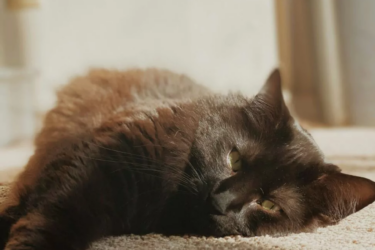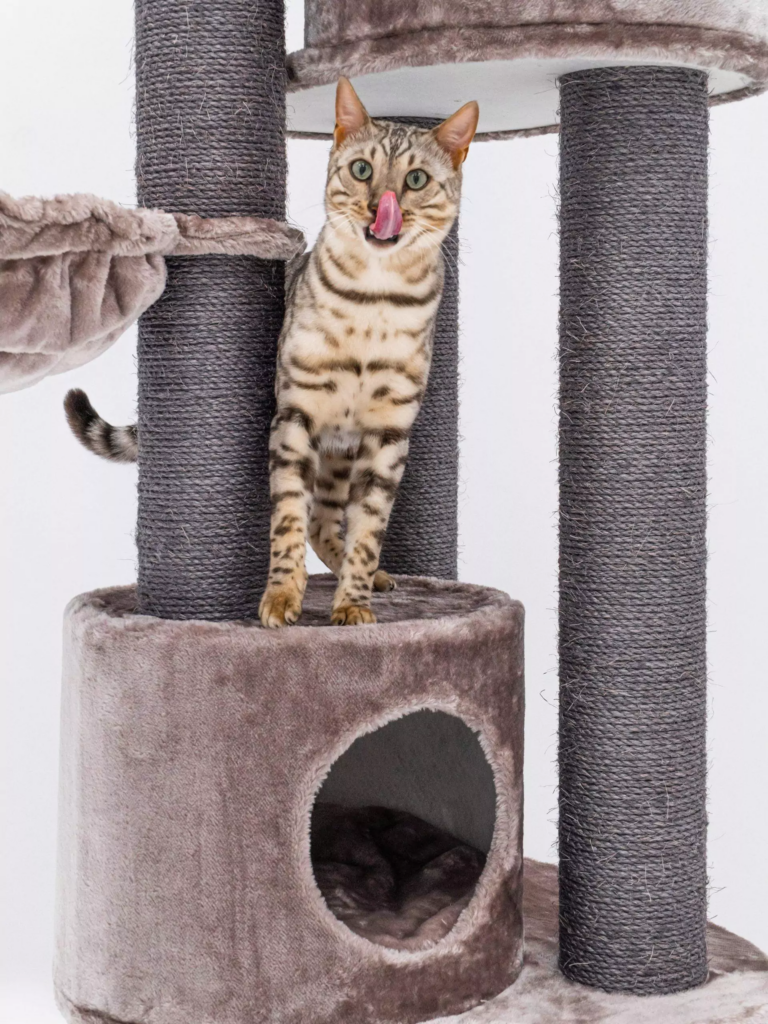
A Bengal is beautiful, intelligent, and active. This breed has strong hunting instincts and is particularly temperamental. Do you enjoy spending a lot of time with your cat? Then this breed might be a good fit for you!
In this blog:
- The origin of the Bengal
- The appearance of a Bengal
- The coat of a Bengal
- The character of a Bengal
- The care of a Bengal
- The health of a Bengal
- How old does a Bengal get?
- Want to buy a Bengal?
- Fun facts about the Bengal
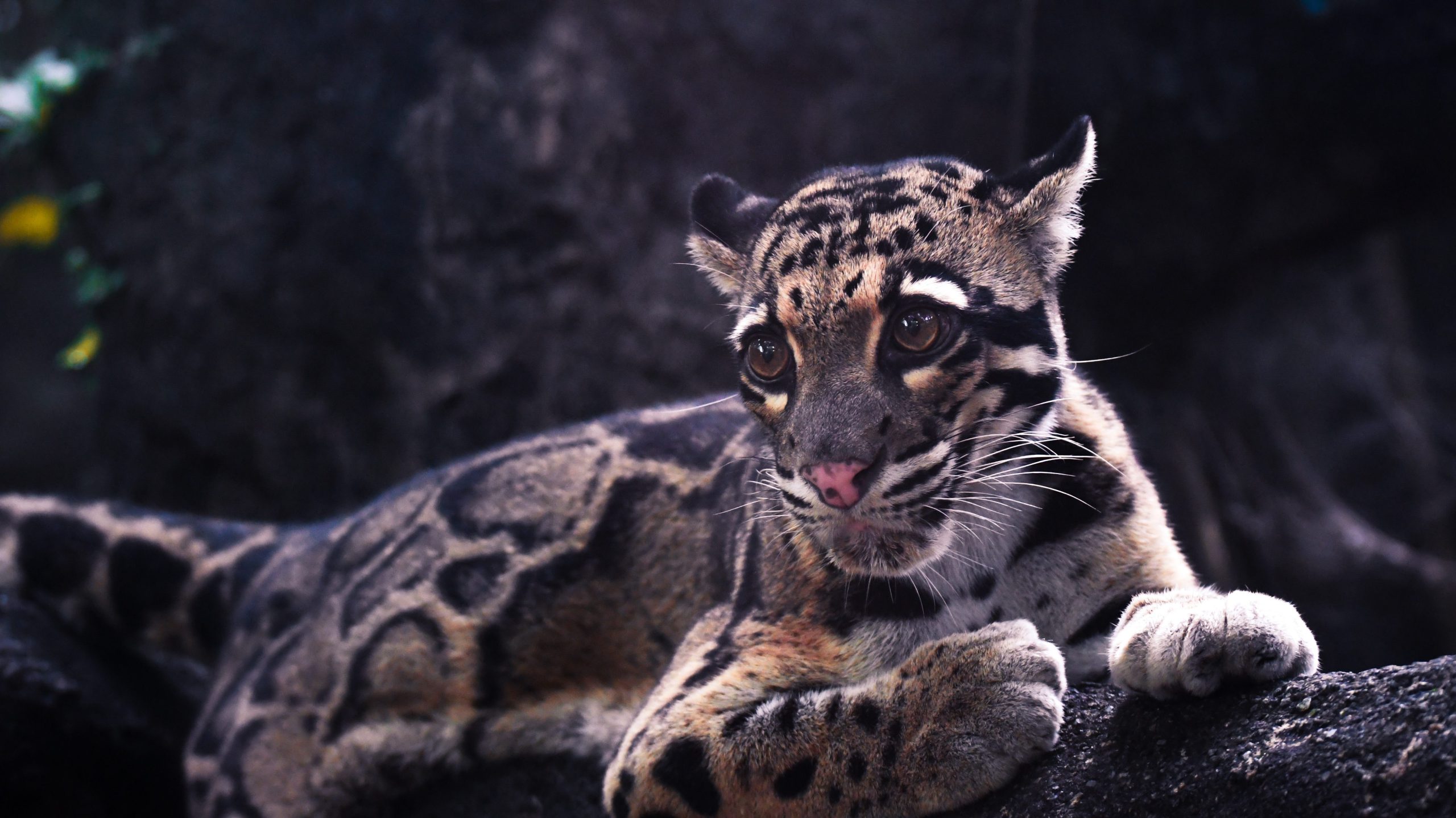
1. The origin of the Bengal
This breed was first experimented with in America. Around 1963, a breeder thought it would be interesting to cross an Asian Leopard Cat with a domestic cat. The goal was to create a breed with the appearance of a wild cat but the temperament of a domestic cat. And it worked. At least, a few generations later. The first Bengals were far from tame – they were too temperamental and wild to be kept as pets. That came three generations later. In 1983, the Bengal received experimental breed status, and in 1991, it was officially recognized.
These cat trees are perfect for energetic Bengals!
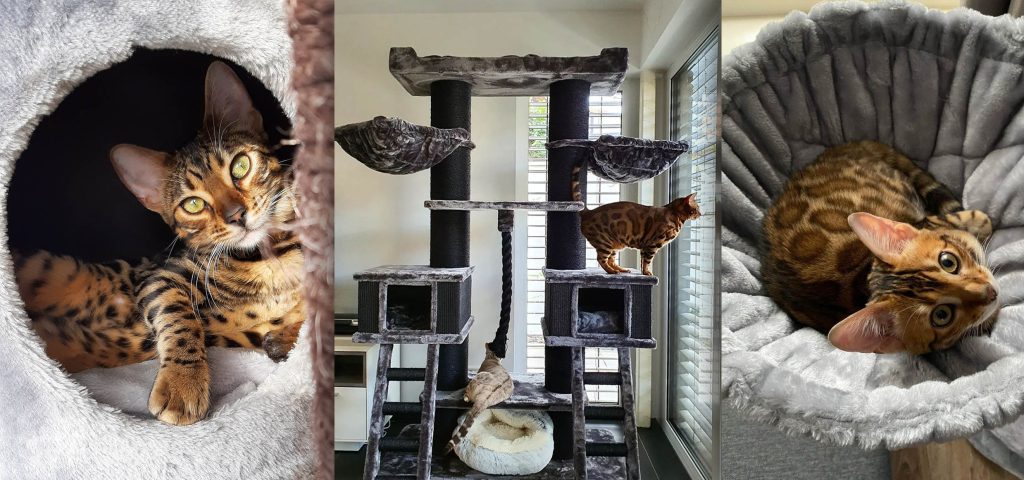
2. The appearance of the Bengal
Bengals are medium to large-sized cats. Adult females weigh between 3.5 and 4.5 kilograms, while males weigh between 4.5 and 7 kilograms, with some exceptions – there are Bengals that can weigh as much as 10 kilograms.
The build of the Bengal is muscular and athletic. This allows them to jump incredibly high both horizontally and vertically – a bit of heritage from their wild ancestors. Their legs are longer than those of an average domestic cat, and their paws are round and large. The head has many rounded contours, is wedge-shaped, and broad. Their ears are small or medium-sized, and their eyes are large and oval. Their tail is beautiful – short, thick, and with a black rounded tip.
3. The coat of the Bengal
The coat of this beautiful breed is short and directly reflects the patterns of the Asian Leopard Cat with which they were crossed. Bengals can have a spotted pattern, where one-color or multi-colored spots are horizontally aligned on the body. The belly also has this pattern. Clearly defined stripes can be seen on the cheeks and neck.
Bengals with a marbled pattern have a coat that resembles that of a tabby cat. This is called “blotched.” This pattern is also horizontally aligned and has three different shades. Both patterns come in various colors: Seal Lynx, Seal Mink, Seal Sepia, Silver, Silver Snow Seal Lynx, Brown/Black Tabby, Silver Snow Seal Mink, and Silver Snow Seal Mink.
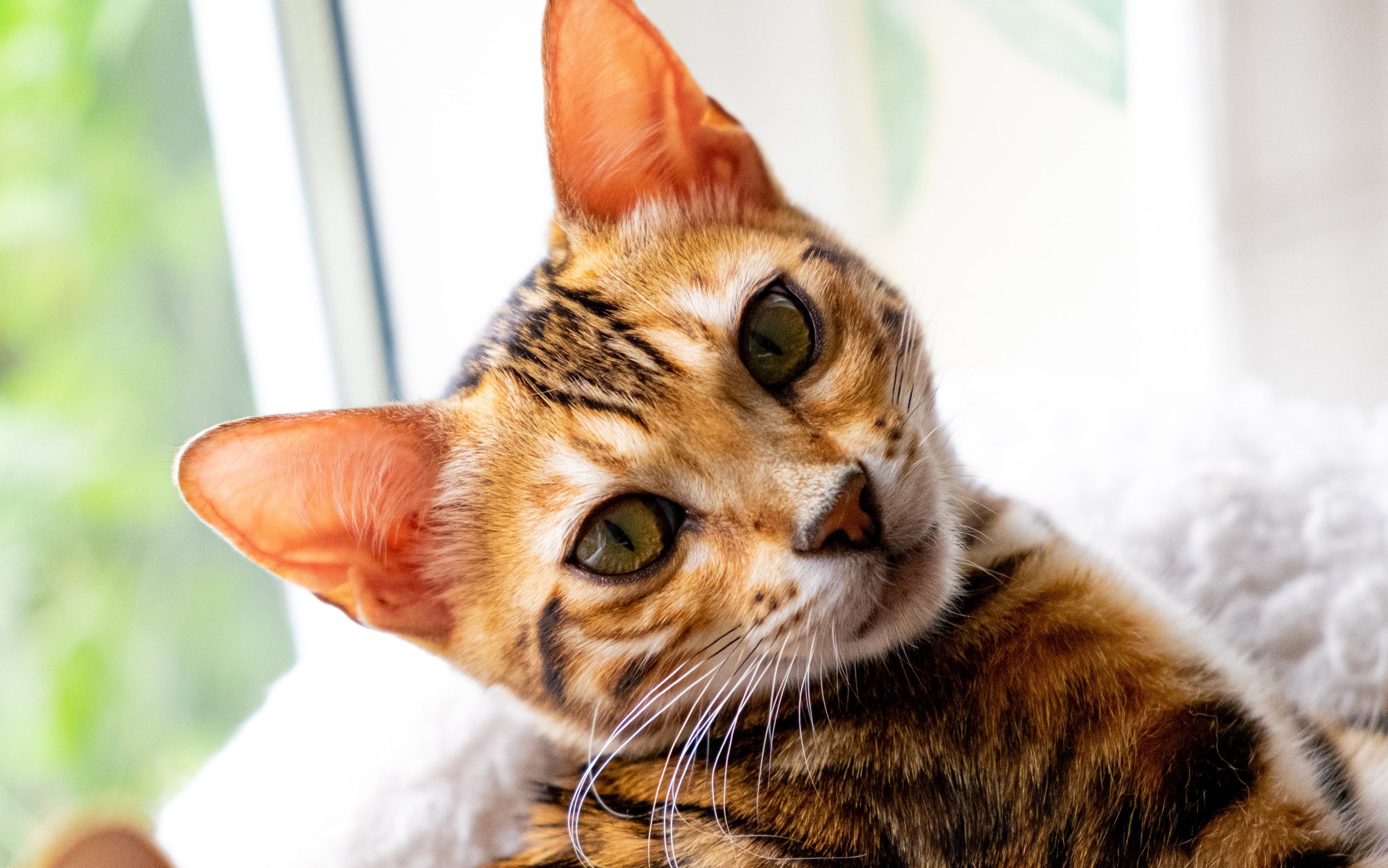
4. The character of the Bengal
Bengals are known for their active and restless character, their temperament, and their energy. Therefore, plenty of space to move and a safe, protected outdoor area are essential if you decide to have a Bengal in your home. Bengals are smart and curious and need to be stimulated to stay healthy and happy. Plenty of strong and challenging toys can help with that. A suitable cat tree for a Bengal is also necessary – ideally a tall and stable one that can withstand some rough play. Bengals are strong and love to climb and jump.
When you choose a Bengal, you choose a companion for life. They form strong attachments to their owners. This also means that you need to dedicate a lot of time to this breed. They love attention from “their people” and also enjoy having a feline companion in the house.
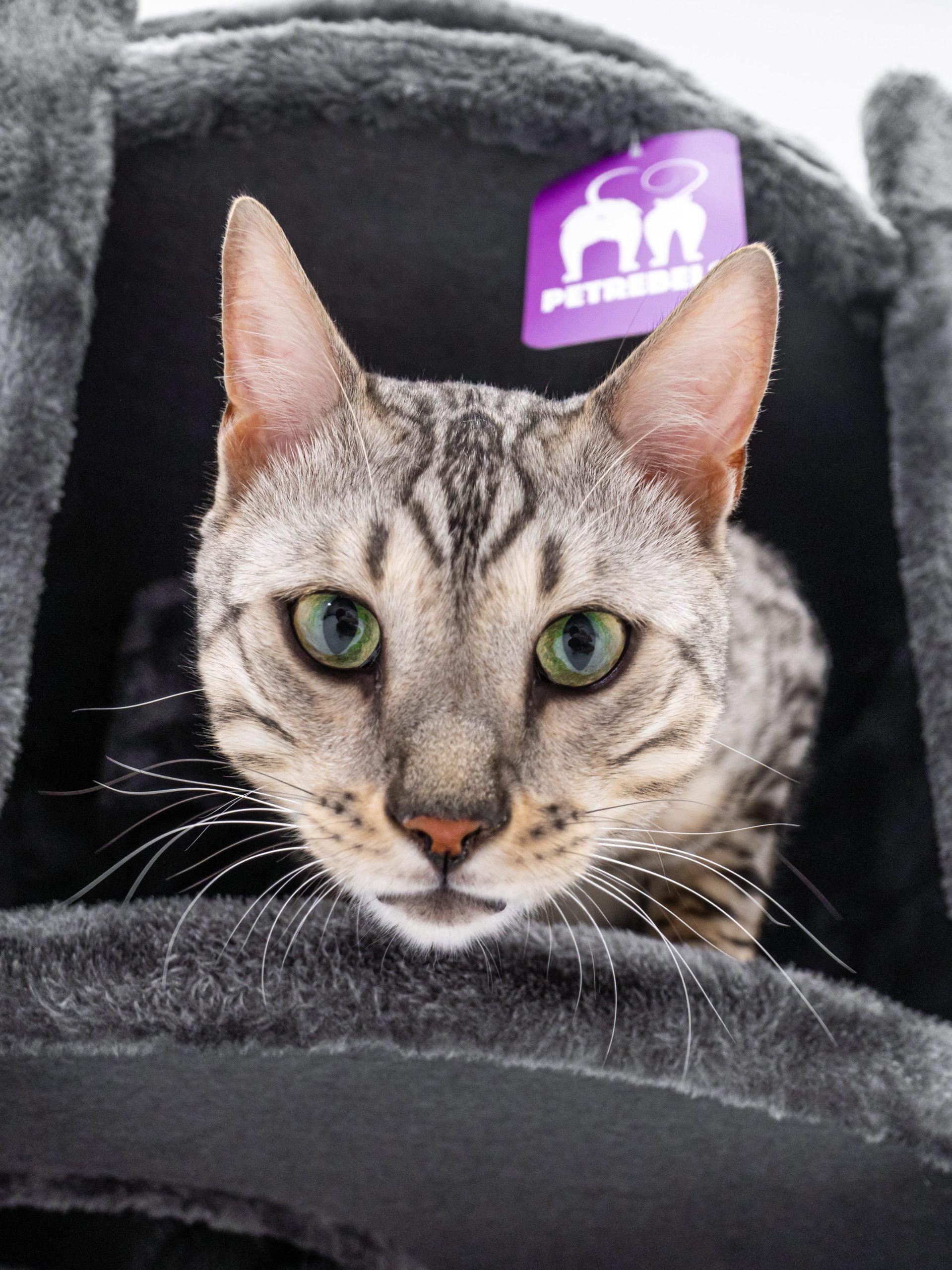
5. Care of the Bengal
The coat of a Bengal is short and requires little maintenance – an occasional brushing is enough. And a good cat owner always ensures the best care for their pet:
- a safe home
- a well-secured outdoor area
- love, attention, and plenty of playtime
- good food and plenty of fresh water every day
- always clean litter boxes with good litter
- a comfortable cat bed and sturdy toys
- a cat tree that suits a Bengal’s character
- protection against ticks, worms, and fleas
- regular vet check-ups
- vaccinations against feline diseases
6. The health of a Bengal
Pedigree cats are bred for unique characteristics. The Bengal also has traits that make it special, such as:
- Medium to large build
- Muscular and athletic
- Long legs
Do you think a Bengal would be a good fit for you? Then make sure to do thorough research on the health of this breed. Many pedigree cats are prone to hereditary conditions. For example, Bengals are sensitive to hip dysplasia (pain in the hips) due to their large size. It’s important to be aware of this.
Want to bring a healthy cat into your home? Ask a veterinarian for advice. You can also check the websites of Dier & Recht and the Dutch Food and Consumer Product Safety Authority for information on the health of the breed, whether it is allowed, and the rules for breeders.
Always buy a Bengal from a reliable breeder, preferably one who is affiliated with a breed association. This way, you can be sure that the cat is healthy and well-cared for. Also, ask the breeder for a health certificate or guarantee for extra peace of mind.
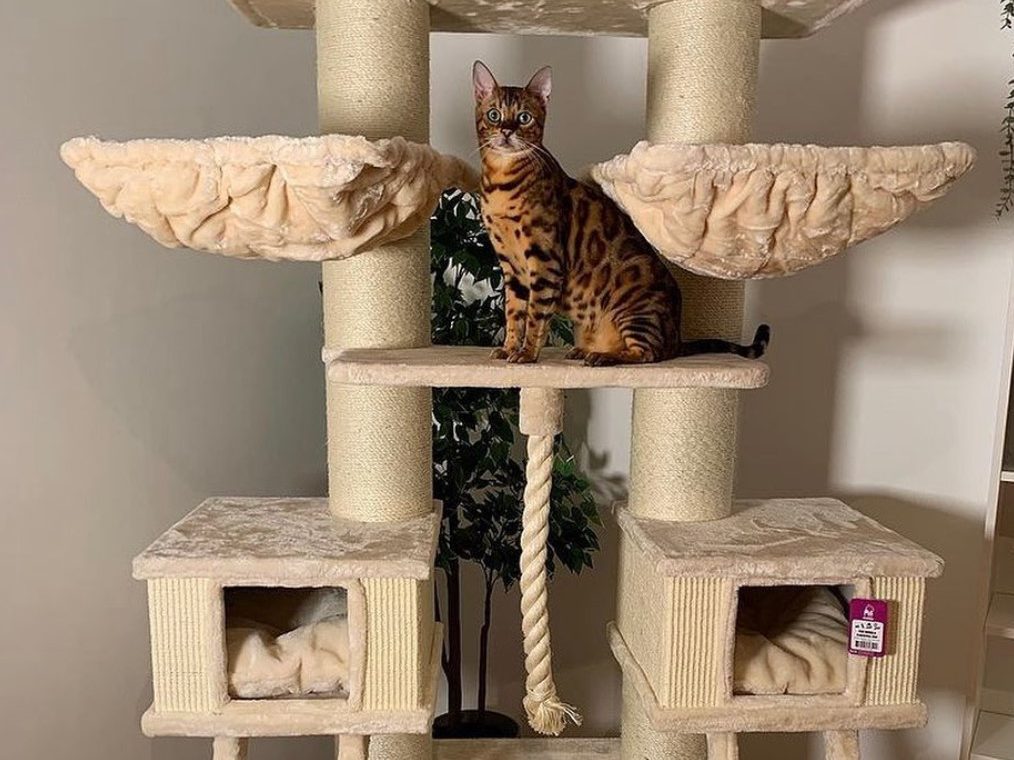
7. How long does a Bengal live?
Bengal cats have the same life expectancy as regular domestic cats. They live between 12 and 16 years. Keep this in mind before getting a cat. A kitten is super cute, but it will grow older and need care. This will cost you both time and money.
8. Buying a Bengal
Want to buy a Bengal? Then go to a recognized breeder, preferably one who is affiliated with a breed association. This ensures that you are buying a healthy, well-socialized cat that has been bred in a humane way. Always ask for the papers, a health certificate, and check the kitten’s parents. Also, take a look at the living conditions: is it clean and homely, and are the parents present? That’s a good sign. Don’t buy cats through platforms like Marktplaats, eBay, or from backstreet breeders.
A Bengal from a reputable breeder costs around 1000 euros. Looking for a cat, but it doesn’t have to be a pedigree? Then consider looking at shelters or adoption agencies. Many sweet cats are waiting for a loving home.
And remember: you’re not getting a cat for just a short while, but for its entire life. Are you ready to take good care of the animal and set aside money for its care and veterinary visits? Then the Bengal might just become your new best friend!
Find out here how much it costs to care for a cat
9. Fun facts about the Bengal
- Bruce Springsteen, Jerry Seinfeld, and Kirsten Stewart all have a Bengal.
- You can easily teach Bengals tricks and train them to walk on a leash.
- Some Bengals have a special gene that makes their coat shimmer.
Also, read more about the intelligent Siamese!
Disclaimer: Petrebels does not consist of veterinarians or behavioral experts: all content, information and tips on this blog are intended to inspire and inform you. Does your cat have complaints or problems and do you have doubts about your cat’s health? Then always go to the vet or a behavioral expert.
